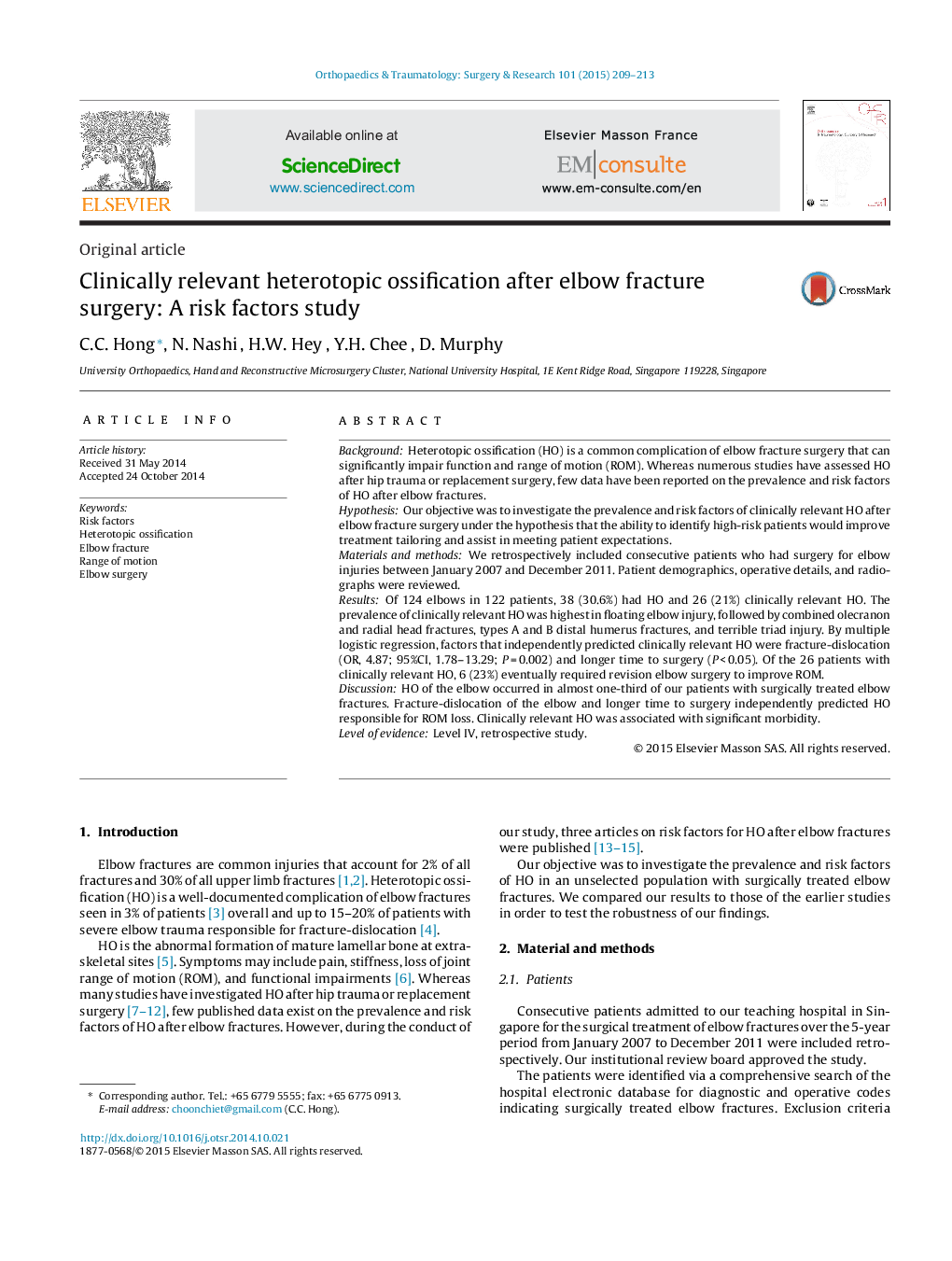| Article ID | Journal | Published Year | Pages | File Type |
|---|---|---|---|---|
| 4081207 | Orthopaedics & Traumatology: Surgery & Research | 2015 | 5 Pages |
BackgroundHeterotopic ossification (HO) is a common complication of elbow fracture surgery that can significantly impair function and range of motion (ROM). Whereas numerous studies have assessed HO after hip trauma or replacement surgery, few data have been reported on the prevalence and risk factors of HO after elbow fractures.HypothesisOur objective was to investigate the prevalence and risk factors of clinically relevant HO after elbow fracture surgery under the hypothesis that the ability to identify high-risk patients would improve treatment tailoring and assist in meeting patient expectations.Materials and methodsWe retrospectively included consecutive patients who had surgery for elbow injuries between January 2007 and December 2011. Patient demographics, operative details, and radiographs were reviewed.ResultsOf 124 elbows in 122 patients, 38 (30.6%) had HO and 26 (21%) clinically relevant HO. The prevalence of clinically relevant HO was highest in floating elbow injury, followed by combined olecranon and radial head fractures, types A and B distal humerus fractures, and terrible triad injury. By multiple logistic regression, factors that independently predicted clinically relevant HO were fracture-dislocation (OR, 4.87; 95%CI, 1.78–13.29; P = 0.002) and longer time to surgery (P < 0.05). Of the 26 patients with clinically relevant HO, 6 (23%) eventually required revision elbow surgery to improve ROM.DiscussionHO of the elbow occurred in almost one-third of our patients with surgically treated elbow fractures. Fracture-dislocation of the elbow and longer time to surgery independently predicted HO responsible for ROM loss. Clinically relevant HO was associated with significant morbidity.Level of evidenceLevel IV, retrospective study.
